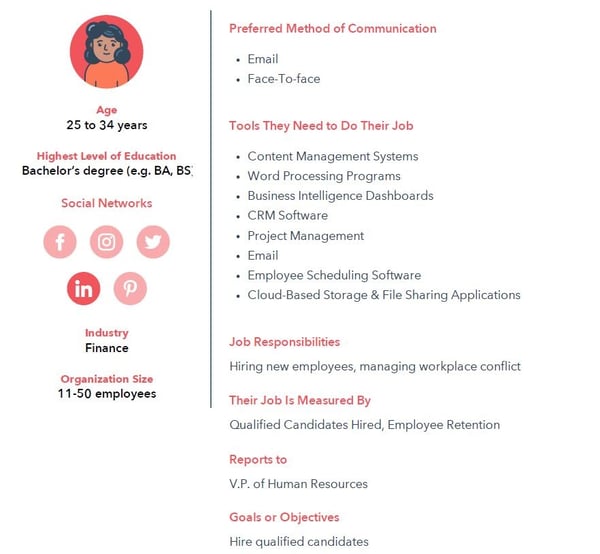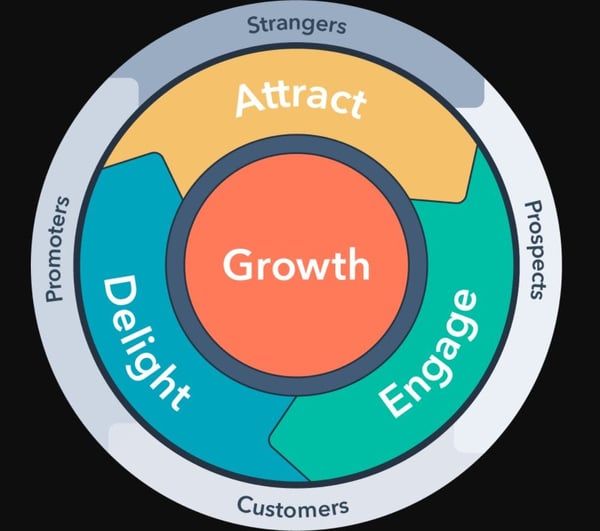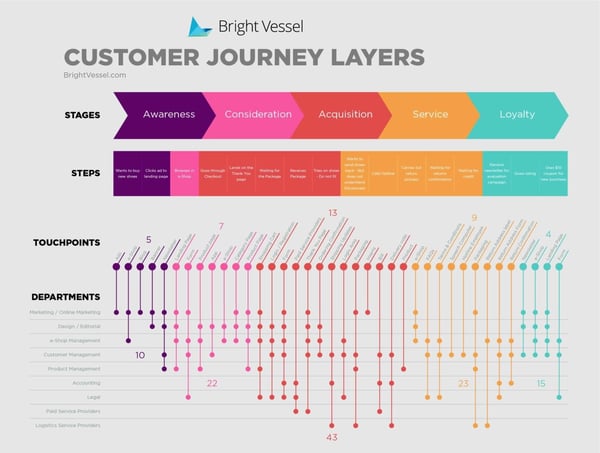Whether they’re standing in line waiting to order at a cafe, seeing a billboard on their commute home, or clicking “add to cart,” your customers are constantly evaluating their experience with your brand.
What they think and feel about the actual process of purchasing something from you is called the buying experience.
A subset of overall customer experience (CX), customer buying experience is influenced by a number of factors over a period of time. These influences include media from various channels – traditional channels like television, radio, and out-of-home, plus digital channels like social and email – as well as the customer’s network. The buyer experience is multi-stage, continuous, and often emotionally driven.
The most common criteria for providing good buyer experience are:
Happy customers are the lifeblood of your business. They help you grow by returning to buy again and by promoting your brand through their network. They rely on you to learn their needs, provide solutions that respond to those needs, and make it easy to buy. To make and keep these customers happy, you need to ensure they have a positive buying experience. Here’s how to do it.
This part of the process involves the heaviest amount of research. Start by learning who your customers are. By researching your target audience you can attract and delight buyers with consistency.
Listen to your customers. One of the biggest mistakes marketing and sales teams make is assuming they know what matters to buyers without doing the due diligence of discussing with customers what their needs and challenges are.
Create surveys that are geared toward learning the obstacles buyers encounter in their search for products like yours. Take care to include questions that reveal what motivates them, and what stops them from buying a particular product.
If you’re looking for the right survey software, take a peek at G2’s page on Best Survey Software to compare and pick the right option for your needs.
Reach out to existing customers to find out why they’re using your product. Maybe there’s a common use-case you were unaware of that a subset of your customers identified. Or perhaps a feature you thought would be popular with customers is barely used.
This is also a great opportunity to engage with would-have-been buyers or previous customers who stopped using your product (customers who churned). While these kinds of conversations can be a bit tricky to set up, learning firsthand from people who rejected your solution can be a powerful tool to guide building a better buyer experience and re-capturing market share.
A good way to facilitate customer conversations is to sit in on sales and customer service calls. These teams often have the most direct communication with buyers, and they can provide perspective that might otherwise be unavailable to you.
Everyone in your organization who has influence on the buyer’s experience - designers, engineers, marketers, and more - can benefit from hearing directly from the customer. Not only will this give you a deeper understanding of your customer, it will help align teams to provide a cohesive and consistent buyer experience.
Once you’ve done all this research, you’ll be ready to assemble the customer models that will guide your strategy for providing good buying experience: buyer personas.
A buyer persona is a snapshot of a typical customer type. It is a partially-fictional dossier made up of the most common characteristics, motivations, and pain-points of actual customers, and it is best used as a living document that guides your decisions toward meeting customer needs.
The more representative you make a buyer persona of your actual target audience, the more likely you are to anticipate customer needs, convert sales, and provide a good buyer experience!

If you’ve never made a buyer persona before, check out HubSpot’s list of questions for putting one together.
After you’ve done your homework on who your buyer is, you must then identify where your buyer is. The buyer’s journey is a bird’s-eye view of every step your customer takes, from the moment they learn about you through the moment they purchase - and beyond.
There are three key elements of the buyer’s journey:
There are other models that use additional buyer stages or slightly different structures (see below), but they all use variations of at least the above three elements. Also, the buyer’s journey is not a discrete set of events, but a continuous process. To cultivate an excellent buyer experience, you have to understand how best to accommodate the buyer according to their stage in the journey.

Once you grasp the buyer’s journey, you can create a guide called a journey map that will help you plan where, when, and how to reach your audience. Below is an example of customer journey mapping, but yours will be specific to your industry, target market, and customer persona.

A good way to create a strong journey map is to bring in people from different teams (especially the ones who were in the earlier sales call discussions) and brainstorm. Look at the research you’ve done so far.
What is your customer feeling at a certain stage? What are they thinking? What factors might cause them to move backward or forward through different stages? Getting it all on a journey map lets you predict how to accommodate your customer through the buying process and execute a plan.
If you want to lead your customer along their journey, simplify! Review the resources and research you’ve put together and look for areas to improve so the buyer has a seamless route all the way through awareness, consideration, and decision.
Re-read some of the top buyer pain points you compiled earlier. What can you adjust in your process that would help alleviate some of those? Is there a spot in the checkout flow on your website that’s cumbersome or not particularly intuitive? Does redeeming a discount coupon for one of your products require too many steps? If a customer has a question, can they easily find the answer in a FAQ page section on your site? These are just a few examples of questions you might ask yourself as you work through the process of improving the customer buying experience.
After you’ve addressed some of the obstacles that could prevent a buyer from moving through each stage of the journey, look for appropriate areas to actively nudge your customer further down the sales funnel. If your customer visits your website during the consideration phase, you can entice them to buy with a first-time-visitor discount.
If they get almost all the way through the decision stage but leave your site after abandoning the shopping cart, you can set up automated email to gently remind them of the items still in their cart. What tactics make the most sense will depend on your customer and on their current stage.
As customers move from learning about your brand, to thinking about their options, then deciding to buy, you can shepherd them through each stage by thinking empathetically and solving for roadblocks they might encounter along the way.
Empower your customers to make informed decisions. Make all of the key benefits – and tradeoffs – across your products or services accessible so the buyer can decide what is the best fit for them. Not every buyer has the bandwidth to get into the weeds about differences between your products. Show that you’ve done your homework by highlighting the most relevant details and contrast them across product lines to make it easy to click the checkout button.
If you have multiple similar products, give a side-by-side comparison demonstrating the varying features and benefits of each product type, along with its corresponding pricing structure. It is important to be upfront with pricing, since hidden fees and other unanticipated costs that don’t become apparent until checkout can prevent them from buying and negatively impact their perception of your brand. Even worse, they may communicate their distaste across their network, which could spell disaster for your reputation and your bottom line.
One way to make your product or service comparisons more effective is to match each one to a specific use-case or common persona type. Slack, the popular business communications platform, offers several tiers of service with varying features at different pricing structures. Notice below how they suggest each tier of service based on business-sizes in “standard,” “plus,” and “enterprise” categories.
Structuring your product and service offerings like this can not only provide a positive buying experience, but it can also help prevent customers from getting a poorly fitting solution which could ultimately reflect badly on your brand.

Customers are looking to your company to help them solve a problem and get a specific job done. Show them you’ve been paying attention to their needs.
In your messaging, find meaningful ways to tie the solutions you provide to the earlier research you did when learning about your audience. You know who your customer is - demonstrate how you’ve listened to them by drawing a direct line between a common pain point and how your product solves for it.
Were your customers frustrated that they could previously only access your software via desktop, when they typically used similar products on-the-go via phone or tablet? Call attention to the new mobile app you just rolled out because of the valuable customer feedback you received.
Drawing a connection between a customer issue and a newly implemented benefit shouldn’t stop at the product-level. It should also be demonstrated in how you respond to customers. Customers interact more and more with brands via social media to address their issues. If your research shows customers have been struggling to connect with your customer service team, let them know how reachable you are through multiple channels, including your website, email, and social media.
If there were any speed bumps in the buying process you discovered through your research, implement solutions and make customers aware of the changes. When you show an openness to adjusting based directly on customer pain points, you foster feelings of trust and confidence from your audience. Customers will feel like their experience matters to you, and it will improve their perception of your brand.
A final, but important step in facilitating a good buyer experience is making your customer feel heard. Let them know their opinions matter, and that you’re listening to them. Elevate your customers by giving them the opportunity to provide feedback.
As is the case with most of this guide, keeping it simple is key. Whether you’re sending a post-purchase email with a prompt to review or directing them to a place on your site to give a firsthand account of their experience, make it welcoming, straightforward, and – if appropriate – fun!
Nobody wants homework, especially not after they’ve just handed you their hard-earned money. Enable your customers to feel a personal stake in the feedback they provide, and make whatever form the prompt takes a low-stakes, minimal investment of time and effort while still leaving room for useful and actionable responses.
In your prompts for buyer feedback, show positive, real-world examples of previous customer reviews or input that led directly to product or buying experience improvements. The credibility of others’ reviews will make your customers more comfortable with providing earnest feedback that you can learn from to continue improving buyer experience, and possibly showcase in the future.
Encourage buyers to amplify their positive experience to their network. Whether it’s a simple “social share” link, or an incentive like a referral discount to promote new customer traffic, this is where you can boost a strong customer’s good experience, and lead them back out into the world where they may hopefully become a repeat customer and a new advocate for your brand. You can learn more about how to get positive customer reviews in this HubSpot post.
Perhaps the most critical perspective on the buyer’s journey comes from understanding that it is not a finite passage from start to finish, but rather a continuous process where the buyer can shift between the many stages.
It is important to treat every buyer’s experience as one that is repeatable and magnified across their network. If you work to continually evaluate your understanding of your target audience, and reinforce a positive experience across each stage of their journey, you will build sustainable growth and a community of happy customers who will go out of their way to lift up your brand.
Sean Wood is CEO of Madera Insights, a marketing consultancy based in Los Angeles. His areas of focus include emergent technology, software, and e-commerce. Send him all your baking, puppy, and movie posts. Learn more about him at www.seandwood.com.
What makes a successful brand? Customers.
 by Mara Calvello
by Mara Calvello
Have you ever had an experience with a brand that completely wowed you? So much so that you...
 by Hannah Tow
by Hannah Tow
In a world where digitization leads the way in almost every sector, customers have developed a...
 by Vinod Janapala
by Vinod Janapala
What makes a successful brand? Customers.
 by Mara Calvello
by Mara Calvello
Have you ever had an experience with a brand that completely wowed you? So much so that you...
 by Hannah Tow
by Hannah Tow


